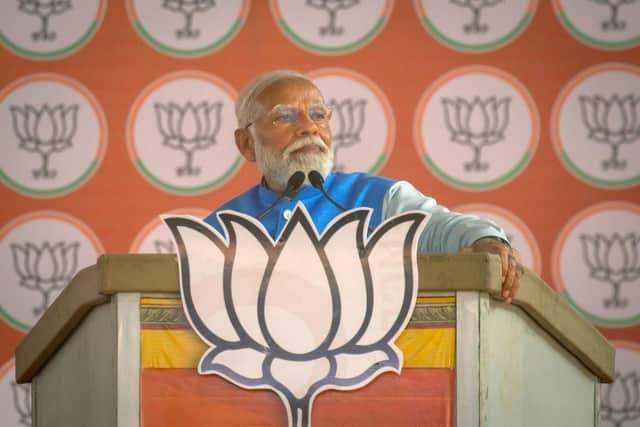World Explained: How India's politicians are using AI to reach voters in the world’s most populous country
As India goes to the polls this weekend, it is not just traditional campaign rallies and lobbying which will help voters make their decision.
In this election, the largest in the world, artificial intelligence (AI) has been key to get the message across – especially to communities speaking one of India’s 780 languages.
Advertisement
Hide AdAdvertisement
Hide AdOne viral video, the origin of which is unclear, shows prime minister Narendra Modi speaking to voters, with the speech available in Kannada, Tamil, Telugu, Malayalam, Bengali, Odia, Punjabi and Marathi. Mr Modi, who is running for a third term, is known to fluently speak just two Indian languages – his mother tongue of Gujarati and Hindi, India’s most commonly-used language.


Other politicians in India’s regions are also generating their own videos, while parties are creating AI voice chats which phone individual people and speak to them in the voice of the party leader.
In the quickly-evolving world of AI, India will not be the only country where the election is affected by deep fake videos – there have already been warnings that China could use AI to meddle in the US presidential election later this year – but it is one of the first.
However, while tech companies in the US are working to prevent AI affecting the outcome of the election there, in India it has been embraced, even by the major parties.
The Indian vote is held over a lengthy period. While voting in the general election started on Friday, it will run in seven phases before the 543 members of the 18th Lok Sabha are elected, meaning online video campaigning and automatic phone calls are a welcome relief for tired candidates.
One “deep fake” video generation company visited by a New York Times reporter took images of one campaigner’s face and recorded his voice, then created thousands of personalised videos for voters. The campaigner, Shakti Singh Rathore, a member of Mr Modi’s Bharatiya Janata Party (BJP) party, said he believed he had been able to reach about 1.2 million people through his video messages and phone calls.
He said traditional cold calling of prospective voters meant most people would hang up when they realised they were receiving a canvassing call, but the personalised elements of AI were helping to engage them.
“Now, when a local leader utters a voter’s name, it immediately catches their attention,” he said. “AI is wonderful and the way forward. How else could I reach the beneficiaries of Mr Modi’s programs in such large numbers and in so short a period of time?”
Advertisement
Hide AdAdvertisement
Hide AdMost people who watch the videos and receive the calls are aware they are automatically generated. The viral video of Mr Modi has been identified as showing the leader wearing two different pairs of glasses during the same clip, while experts have pointed to some pixelation on a party badge worn on his shirt in a move reminiscent of the Kate Middleton photo editing scandal.
Yet Indian campaigners claim they are still being welcomed by voters. The blurring between fiction and truth is already a difficult issue in politics. It doesn’t seem like AI will make this any easier.
Comments
Want to join the conversation? Please or to comment on this article.
